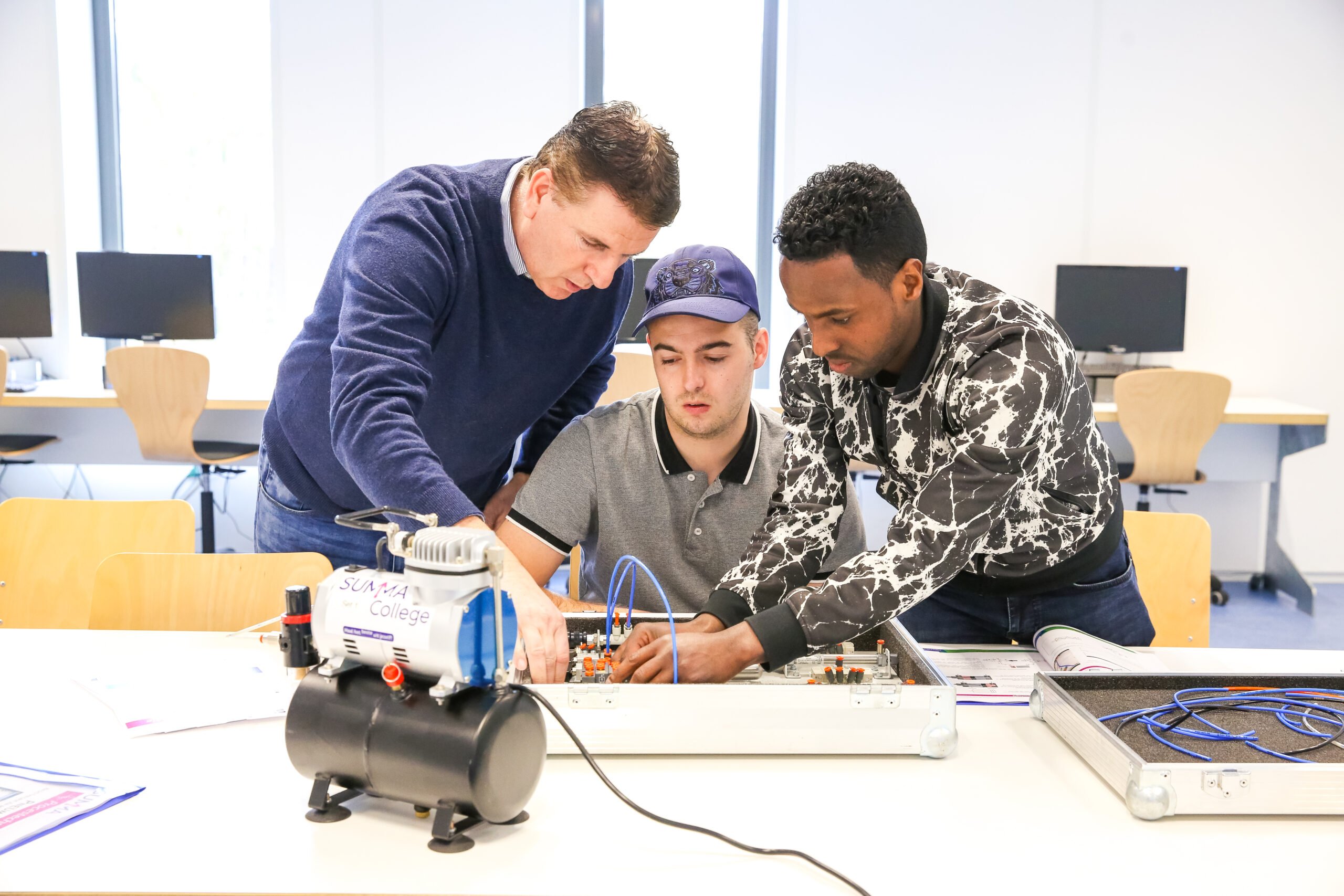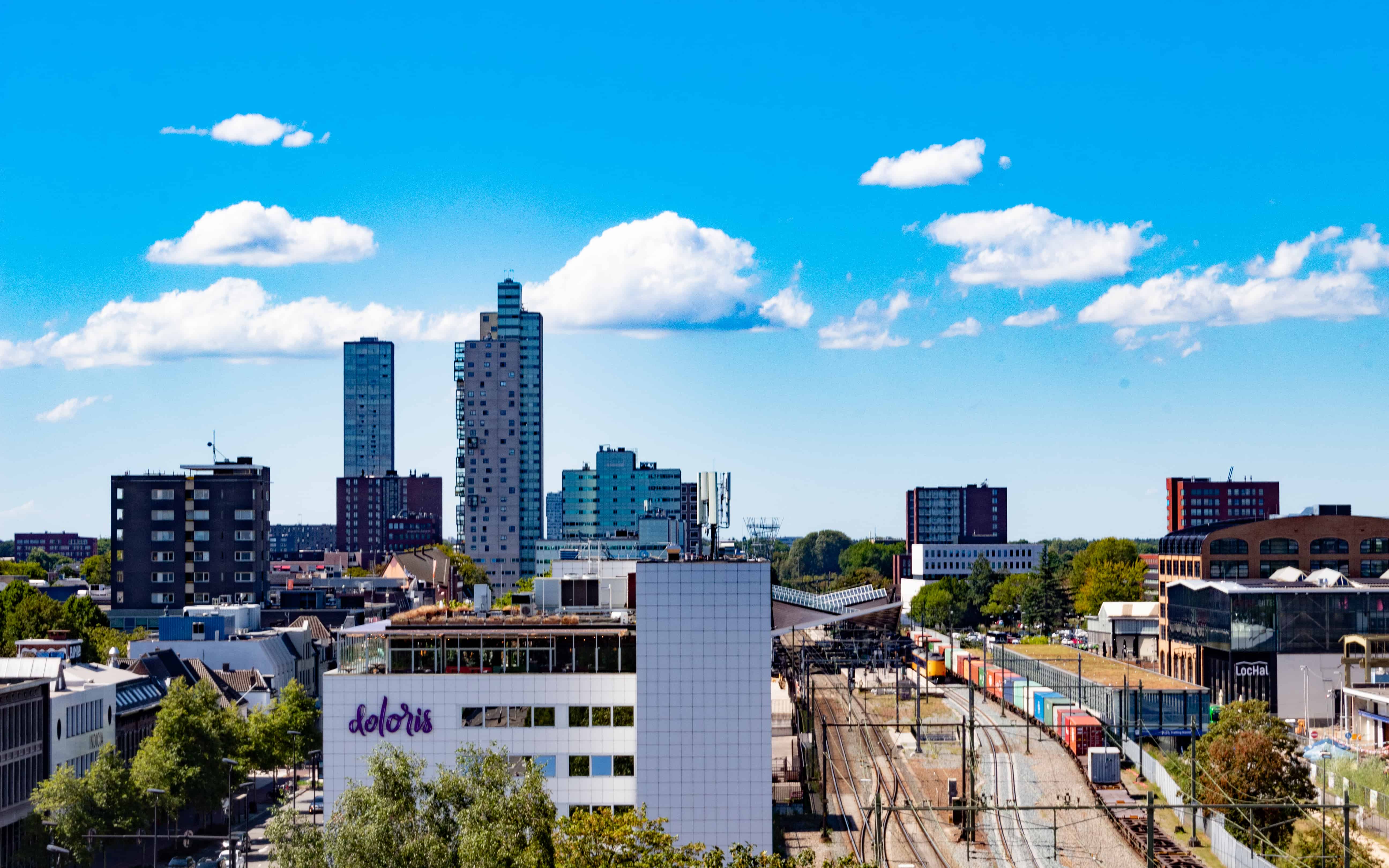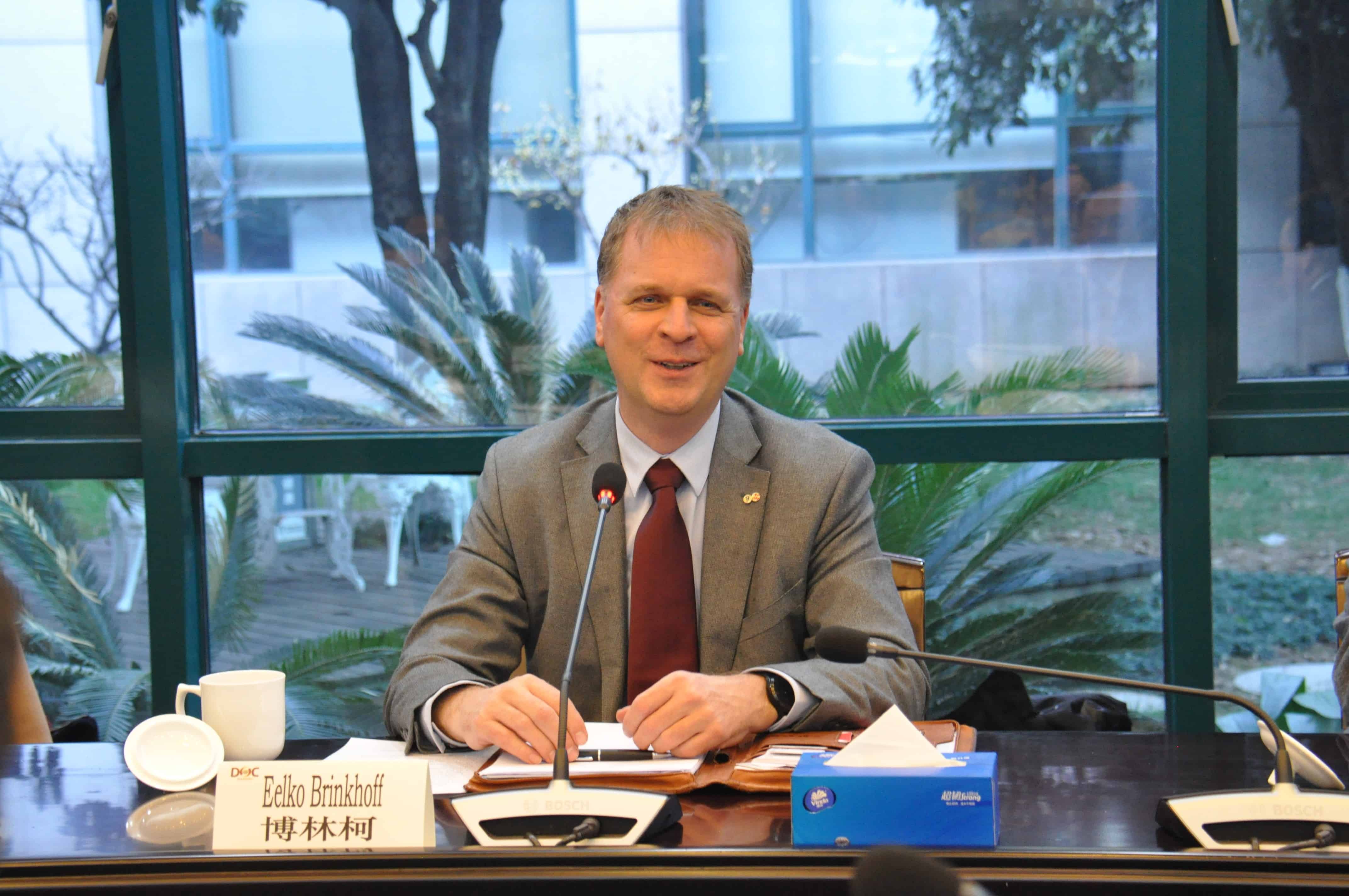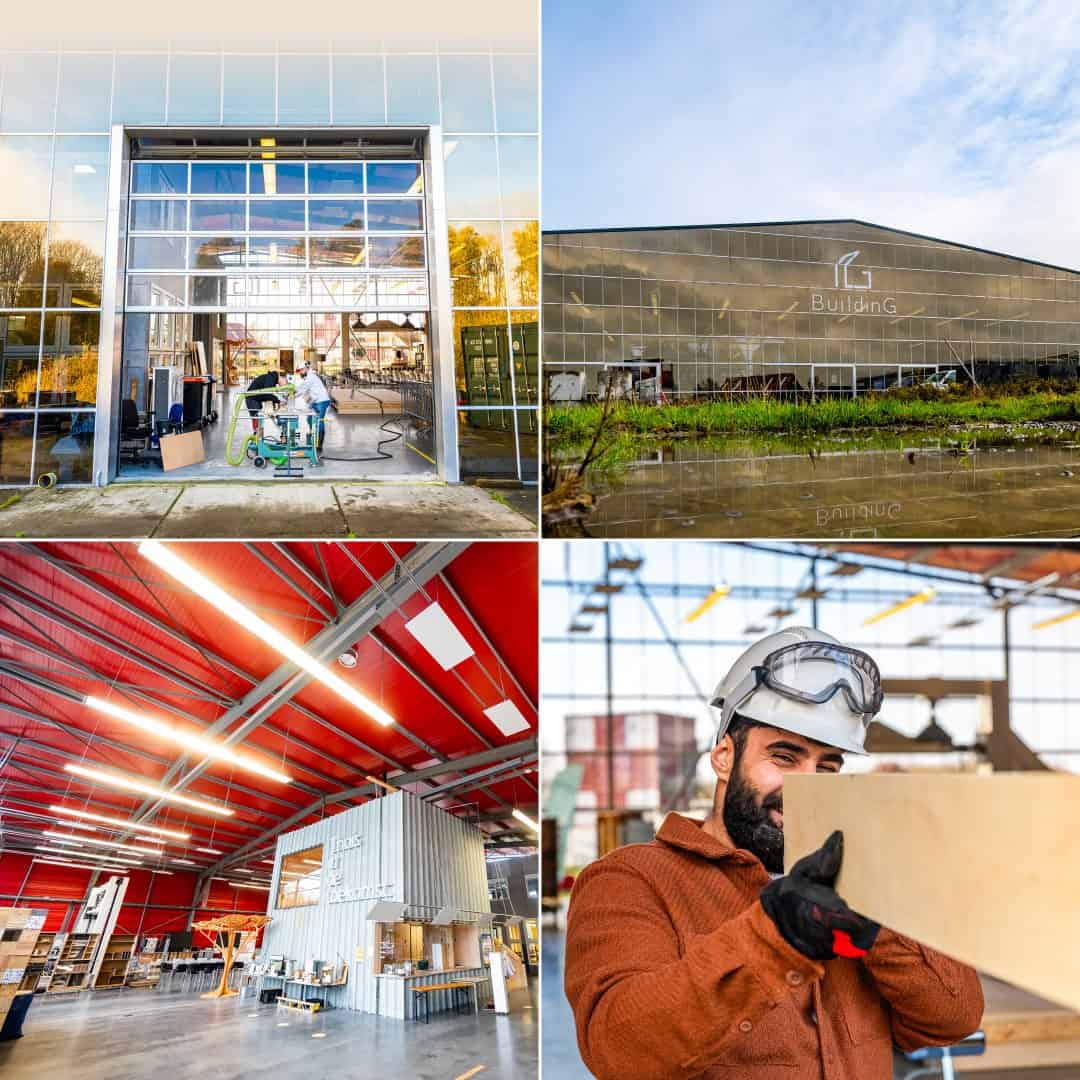
Technical innovations abound in the Brainport region in the Netherlands. Innovations to combat climate change, optimize production processes and improve healthcare, to name but a few. Only these innovations do need to be produced. “There are huge challenges in the technology sector to meet the shortages in the labor market,” says Saartje Janssen, director of Summa Techniek. “And vocational training vacancies in particular are already problematic in that labor market.”
The economy in the southeast Brabant region has been growing for 7 years in a row, according to the Brainport Monitor 2020. The number of companies rose by 2,600 new companies in 2019 compared to 2018. Of those new companies, 10 % are tech companies. This growth is offset by a decrease in the number of vocational training students who opt for a more technical education.
Getting people interested
Supported by companies from the region, Summa College applied for a grant from the European fund REACT-EU, which provides financial support for the recovery after the COVID-19 pandemic and for the transition to a green and digital economy. This grant was awarded in September, and with it, Summa was able to start the project ‘Smart Craftsmanship & Smart Employability’.
Over the next two and a half years, the knowledge institute will work with companies in the region on projects that should get young people, as well as people coming from the workforce elsewhere, enthusiastic about a technical profession. “And see to it that people who are already working in the technical field are retained.”
Since 2018, Summa College has been based at Brainport Industries Campus (BIC), where cutting-edge technology, entrepreneurship, education and high-quality facilities converge. Now the school wants to establish a hybrid learning environment there for vocational training students and also for the employed and unemployed.
Read more about Summa College and BIC here.
Be and stay ready
This learning environment is already physically in place, Janssen says. A state-of-the-art workshop, a FABLAB – an exploratory space for people who still want to choose tech – plus various classrooms for theory and practice along with meeting rooms and facilities should ensure that students, employed and unemployed people are ready for a job in the high-tech manufacturing industry. More than 1450 students are already using this learning environment, according to the REACT project plan.
With the subsidy, Janssen is building on that hybrid learning environment even further. “We are intensifying what refer to as Smart Craftsmanship. We want to incorporate innovations in digitalization, automation and robotization into education. To do this, we are developing new learning paths together with companies. We need to work together to ensure that the innovations are incorporated into education more quickly.”
Rudi Rovers is a teacher and developer of process technology at Summa. He is the project leader of the REACT project from within Summa. “That co-creation with industry is important. Everything that we come up with for the future, we come up with together with the business community. In effect, industry has one foot in education. That goes beyond being a learning company or internship company. Someone can give a guest lecture on a particular innovation. Or technicians who help think about the curriculum: What kind of topics does a student get to learn about and what is important?”
Hybrid teacher
According to Rovers, it is no longer the case that the school comes up with something on its own, a student takes it on and then does their internship. “No, the business community is really part of it all now. If it were up to us, a company or a number of companies would actually offer some form of activity during a course of study, such as a practical assignment or a guest lecture. For instance, a Software Engineer from ASML works here one day per week as a hybrid teacher.”
Recently, by way of example, Rovers was at VDL in Hapert where students were given a project assignment. “A technician introduced the subject and said, ‘I’ll see you back in ten weeks with the end result.’ As teachers, we support the students in learning the skills they need to complete such a project. For example, another manufacturer from the SMC automation company is coming today to give a guest lecture.” Students can contact SMC’s technical specialists each week. “This is how real customer-supplier conversations develop.”
The most important thing is that companies help think about how we can get the latest innovations into education,” Janssen says.
Rovers has noticed that there is certainly a willingness among companies. “For instance, if I send out an invitation asking whether companies would like to collaborate on a new introductory year on Smart Industry for people coming indirectly from secondary schools or universities of applied sciences. Then they reply that they would like to do that. Companies also see that without such a new introductory year, talent is going to be lost. People with higher education qualifications now first have to do a three-year basic course before they can start the course that they actually want to do.”
VIP tour
Smart Employability is also a pillar within the REACT project. “In it, we make the student aware of their career path in tech. In the past, for example, you started at Philips and ended at Philips. That’s no longer the case.”
One example of a project within Smart Employability is a learning path about the Brainport region. Janssen: “On the one hand, vocational training students learn all there is to know about the region: what does it look like, what key technologies are there, and how is the game played with those suppliers. On the other hand, the student then links this to their own career: ‘How am I doing? What interests me? Where would I like to work? Where do I fit in well? What do I find important? How can I develop my talents?'”
As such, Summa is working with Brainport Development on a kind of VIP tour for students through the Brainport region, Janssen explains. “In order to show what kind of technology there is inside a Philips stadium, for example, or in a hospital. Like an MRI scanner that Philips makes, but which also requires parts that smaller companies from this region manufacture.”
Rovers: “Everyone is familiar with the major names in the region. They supply the end products, but thousands of people are employed in the supply chain. They are really important links in the larger scheme of things. In the VIP tour, we want to show what the role of vocational training students can be, what the importance of that role is and what happens when that role disappears. ” According to Janssen, it is especially important to show them the possibilities. “To experience it, then it becomes less abstract that way.”
Useless box
Summa recently opened a so-called FABLAB at the BIC. In it, primary and secondary school students, but also unemployed people on welfare can get a feel for the opportunities that technology has to offer. “The idea is that people can come here to experience technology.”
For example, job seekers can build a useless box during a workshop. “You press a button and the box opens and closes again. Actually it doesn’t make any sense, but people like it. It shows that you can make it yourself. It’s purely about the technology, not the application of it.” To get more girls and women interested in technology, Summa is working with a designer duo who make objects out of steel. “We want to show the design side of engineering. It’s still at an early stage. In the near future, the designers will come up with a proposal for a workshop.”
There were also previous tech events for job seekers and referrers from the Netherlands Employee Insurance Agency (UVW), among others. Janssen was struck by the visitors’ unfamiliarity with the opportunities within the technical sector. “At open days, people come who are interested in it anyway. But there is also a large group that would like to do something with technology, but they’re not sure what or how. If you let this group make something, they get a better idea of what is possible in tech. Playing with technology offers them a perspective. And only then can they say: ‘Hey, that’s what I’d like to do.'”








